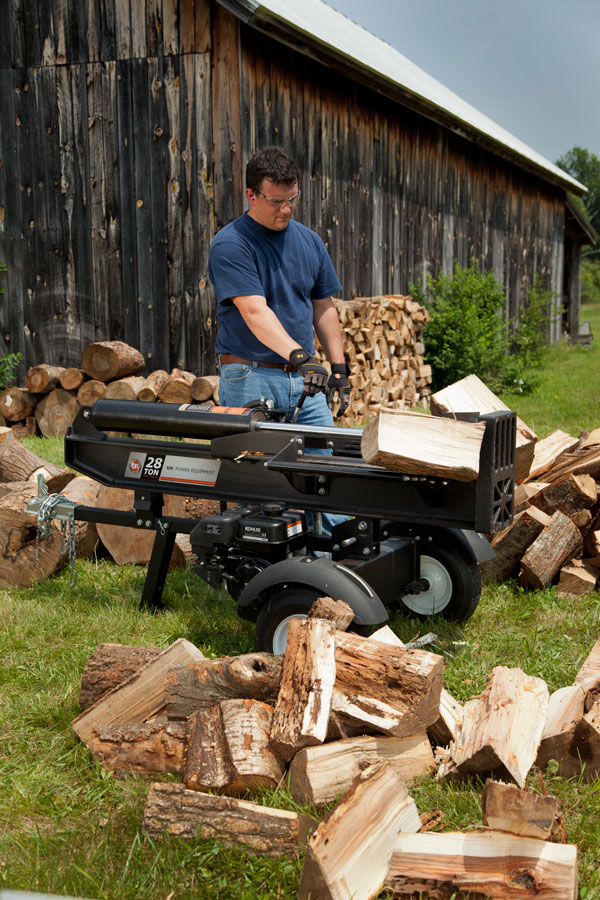
The Electric Log Splitter
Electric log splitters are functionally the same as gas-powered log splitters, they just use an electric motor to power the hydraulics (or kinetic flywheels) rather than a gas-powered combustion engine. They plug into any standard household outlet.
Pros:
- Can be used anywhere that has a standard outlet; indoors, outdoors, on your porch, and everywhere in between.
- Quiet operation; no more scaring the dog and upsetting the neighbors!
- Less expensive than gas-powered models.
- Lighter weight and more portable.
- No need to change the oil, add fuel, or service the engine.
Cons:
- Less powerful than gas-powered log splitters. While gas log splitters are available at the 34-ton level and above, it would be rare to see an electric log splitter above about 10 tons.
- Usually have a smaller log capacity. While gas-powered splitters can handle logs upwards of 18″ in diameter and 25″ in length, electric log splitters can usually handle logs closer to 12″ in diameter and 20″ in length.
- Have to be near an outlet. Or, to use an electric log splitter in a remote location, you would need a generator.

The Gas Log Splitter
Gas log splitters are ideal for the tougher, larger logs that many who heat with wood fuel need to split. They come in many styles: traditional hydraulic models, those with a two-way splitting ram, horizontal-vertical models, and super-fast kinetic models.
Pros:
- Powerful. Gas log splitters are available from around 8-tons all the way up to 34 tons (and even more for commercial units).
- Higher capacity for large logs. For rounds larger than 12″ in diameter and 20″ in length, you’ll probably need a gas-powered log splitter.
- No need to be near an outlet.
Cons:
- More expensive. Because they are generally larger and more powerful than electric models, gas-powered log splitters are pricier.
- Require regular maintenance. Like any machine with a combustion engine, gas splitters will need oil changes, air filter changes, spark plug replacements, and fuel additions on a regular basis.
- Cannot be used indoors or near livestock. You may be able to use a gas splitter on your porch, depending on how well ventilated it is.
- Louder than electric models.
- Heavier and more cumbersome to transport. Many models can be towed around your property with a truck or ATV, and some can be towed on public roads either as-is or with an optional road-towing kit.
The Consensus
Overall, electric log splitters and gas-powered log splitters are each well suited to a specific type of user. The electric splitter is ideal for those who like to split close to home (in their barn, garage, or on a porch) and have mostly small to medium-sized logs. Many people enjoy having an electric splitter for splitting kindling on an as-needed basis. The gas log splitter is better suited to users who know they will need to split bigger, tougher logs and may want to split far from an electrical outlet. Some people even like having one of each, a larger gas unit for the splitting the bulk of their wood, then a smaller electric log splitter for splitting kindling and other odd logs throughout the winter.